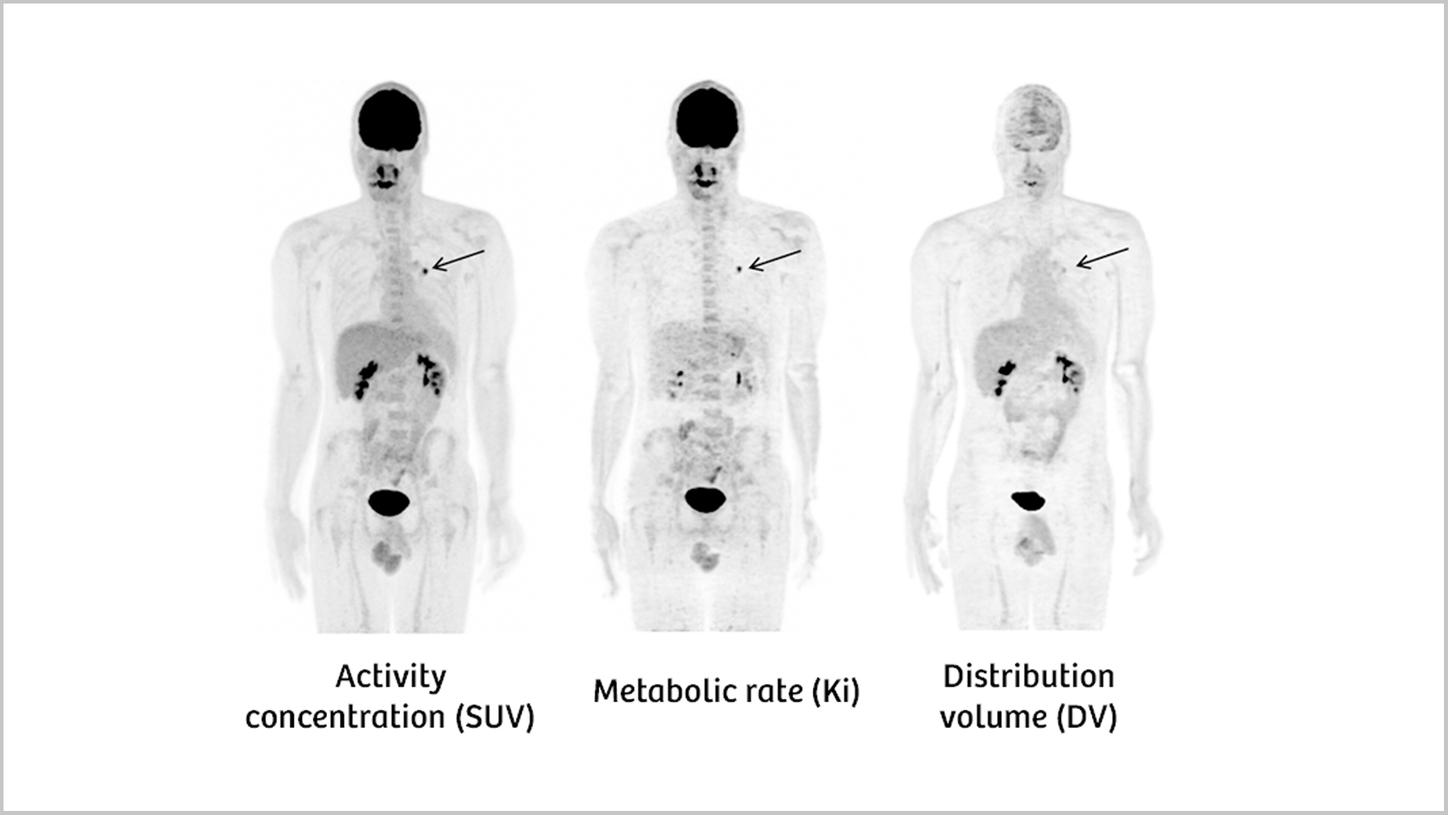
Multiparametric PET AI
The first fully integrated, AI-powered solution to provide additional parameters and enable absolute quantification, compared to SUV alone
One of the most important aspects of PET imaging is the ability to quantify the uptake of tracer in a specific tissue, and the implementation of standard uptake values (SUV) based on static images was a key milestone to facilitate the utilization of semi-quantitative metrics in the clinic. However, PET tracer distribution — a dynamic process altered by a number of factors specific to each organ and region of interest — cannot always be accurately accounted for with SUV.
Learn more about Multiparametric PET AI
The features herein are not commercially available in all countries. Its future availability cannot be guaranteed. Please contact your local Siemens Healthineers organization for further details.

